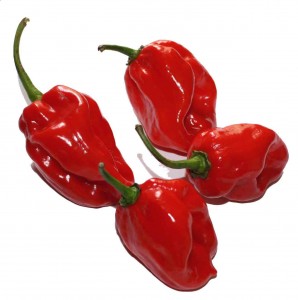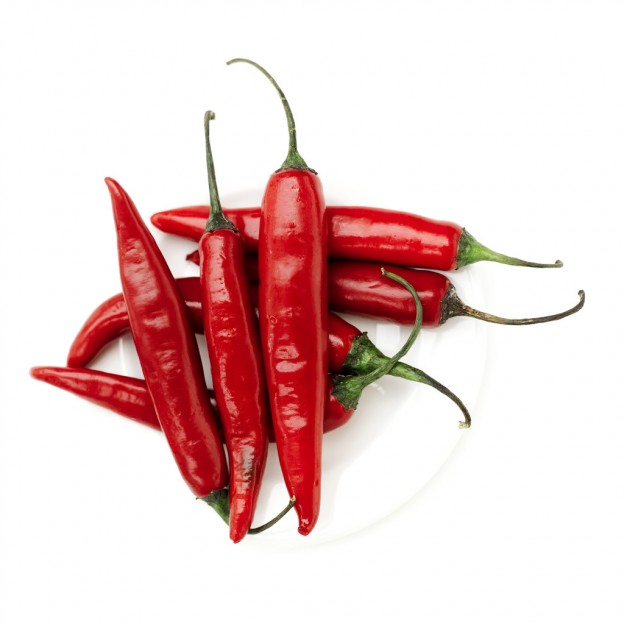By Anthoney J. Andersen – Steroidal.com
Have you ever wondered where your favorite peppers or jalapenos get their zing?
You know, that red hot taste that generates enough sweat off your brow to fill a small glass to the brim.
This notable antioxidant is known as capsaicin.
INCREASE THE HEAT
A variety of spicy foods get their “heat” from capsaicin. Although the chemical compound itself is colourless and odourless, it’s mostly affiliated with hot peppers.
 Habanero peppers contain the most. Jalapenos contain a little. And bell peppers contain none.
Habanero peppers contain the most. Jalapenos contain a little. And bell peppers contain none.
“The more capsaicin, the hotter the pepper, and the higher the antioxidant level,” says Malena Perdermo, MS, affiliate professor of nutrition in the health professions department at the Metropolitan State College of Denver.
“Red chilies are usually hotter, but even the green ones have capsaicin. You can’t always go by the color to determine how hot it is,” says Perdermo.
According to WebMD, capsaicin was most likely created as an alteration by peppers to keep animals from eating them. However, peppers can be an adjustment for humans as well.
Each time the fiery taste enters the mouth, it strikes pain receptors on the tongue’s nerve cells, which immediately delivers a signal to the brain telling your body that this food is hot.
Over time, these cells can become desensitized, which will allow your body to tolerate spicier foods.
“Once a person gets used to a chilli pepper on the tongue,” say Perdermo, “it actually becomes pleasant. Hot peppers release endorphins – the pleasure hormone.”
People in ancient Aztec and Mayan societies, Perdermo explains, even considered chilli peppers as an aphrodisiac.
THE SAVORY ADVANTAGES
Whether you’re a seasoned chilli-head, or a novice to the world of chilli peppers and sauces, you’ll soon learn that the “hotness” of a pepper is measured on a scale known as the Scoville scale.
The Scoville scale measures the “fiery hotness” of a chilli pepper or anything extracted from it, i.e. hot sauce.
The scale’s name originates from its inventor – Wilbur Scoville – the man who began testing the hotness levels of peppers in 1912.
Smoking hot peppers like the ghost pepper and the newly crowned Smokin’ Ed’s Carolina Reaper contain some of the highest amounts of capsaicin found naturally.
According to Naturalnews.com, the purest form of capsaicin is rated at a level of 16,000,000.
The hottest peppers in the world only measure up to 1.5 to 1.6 million Scovilles. Jalapenos and cayenne pepper trickle in at around 8,000 to 50,000.
Capsaicin’s chemical makeup triggers pain-sensitive nerve endings, which is why the pain or burning is experienced when it is ingested or rubbed on the skin.
According to the Food and Drug Administration (FDA), capsaicin’s formula has proven its merit as a natural pain reliever by decreasing the amount of pain signals sent to the brain.
Capsaicin creams have become very popular because of their ability to relieve arthritis pain, sore muscles and nerve pain.
WEIGHT-LOSS CONTROL
According to MedicineNet.com, consuming capsaicin can demonstrate a temporary increase in body temperature and may redirect the body from carbohydrate oxidation to fat oxidation.
This is why cayenne pepper has the tendency to regulate blood sugar levels after a meal.
Capsaicin consumption can make a person feel fuller longer, which will aid in regulating a person’s caloric intake and fat reduction.
Perdermo and her UCLA colleagues turned to peppers while trying to help obese patients on an 800 calorie-a-day diet.
“When you’re on a low-calorie diet, your metabolic rate goes down 10 to 15 percent, and exercise will not raise it,” says Perdermo.
Perdermo’s team used a synthetic form of dihydrocapsiate (DCT), a compound resembling capsaicin, but without the spice.
Obese patients taking the DCT supplement burned on average, 80 extra calories a day ¾ twice the amount of those taking the placebo.
Perdermo says that this modest metabolic boost might help over time, especially when it’s combined with peppers’ proven ability to suppress appetite.
CONCLUSION
When used in conjunction with popular weight-loss diets, capsaicin can be beneficial in helping a person curb their appetite, while reducing calories and body fat.
Furthermore, including peppers in your diet can also be a fun way to add flavor to your food, and give your taste buds that exciting “kick” it deserves.
Get to sizzling.







